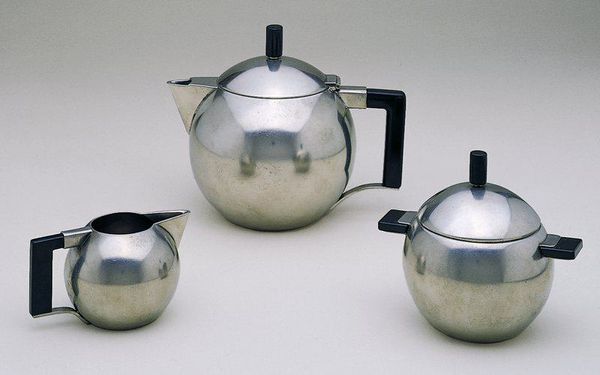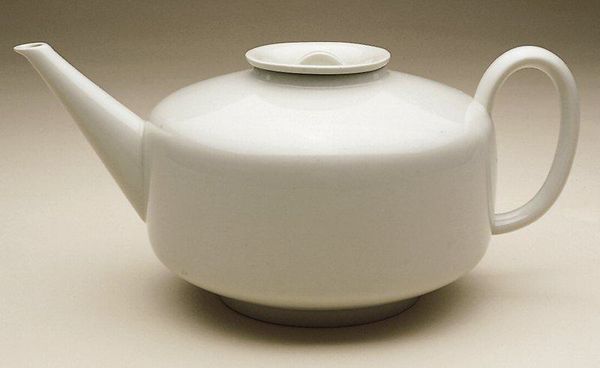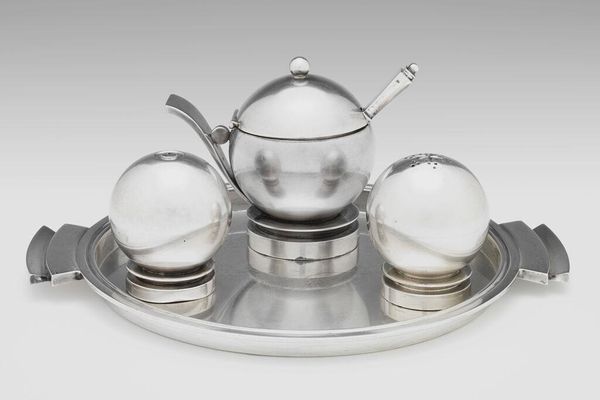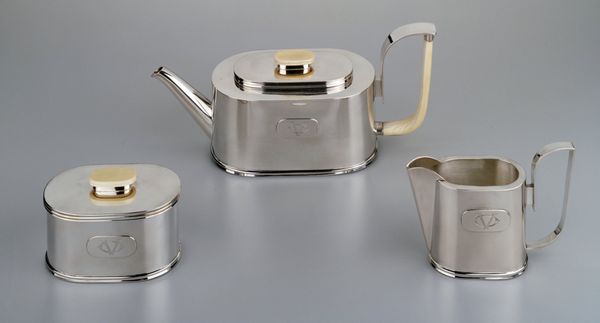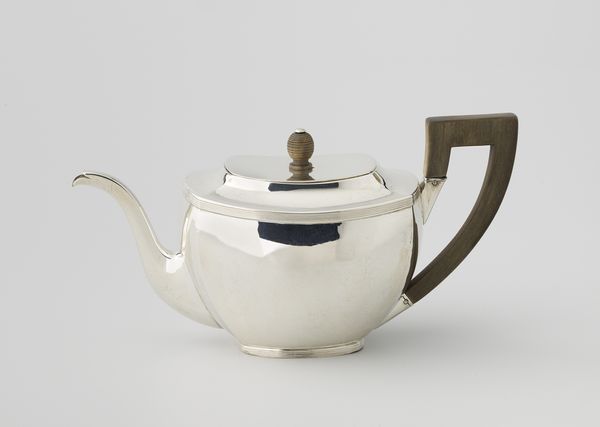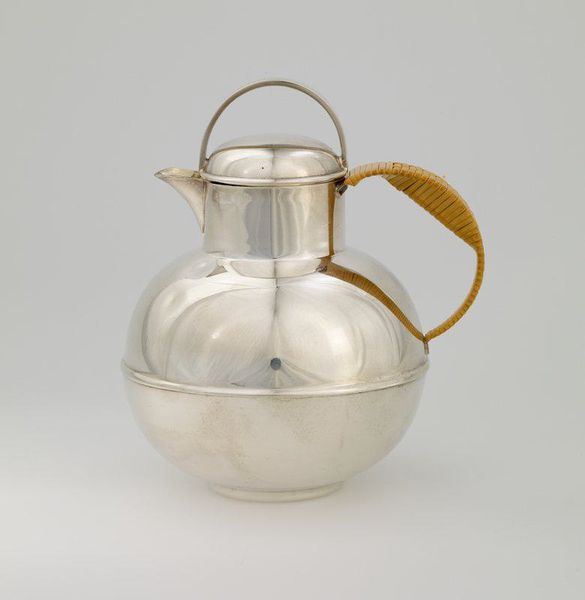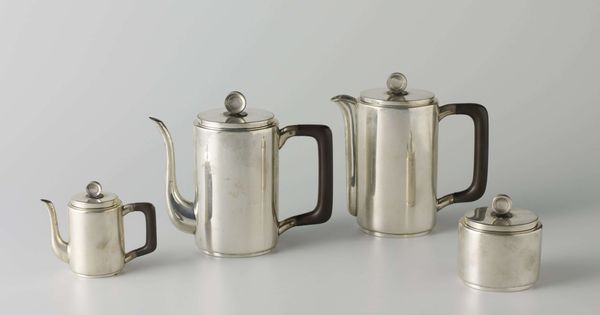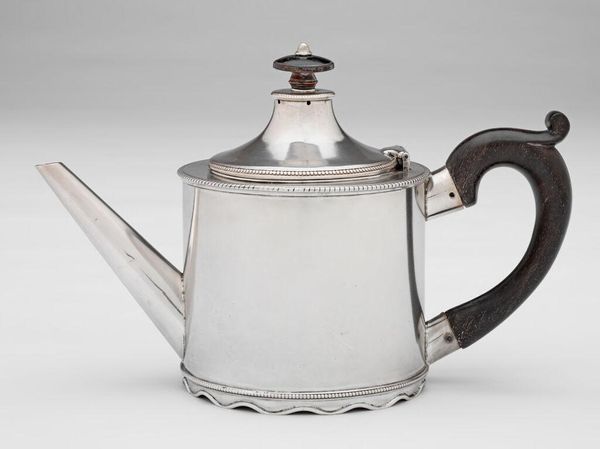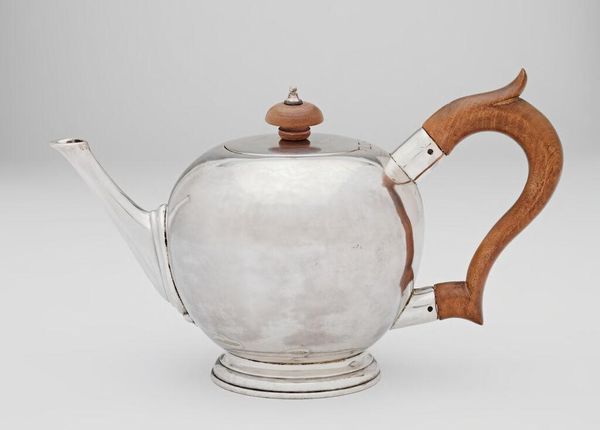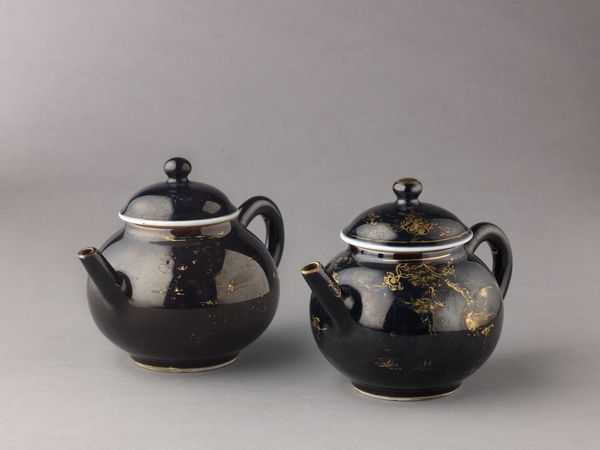
metal, ceramic, photography
#
art-deco
#
metal
#
ceramic
#
photography
#
geometric
#
ceramic
Dimensions: 2 1/2 x 4 1/4 x 3in. (6.4 x 10.8 x 7.6cm)
Copyright: No Known Copyright
Editor: We're looking at a "Creamer from a tea service" created around 1930, currently housed in the Minneapolis Institute of Art. It looks like it's crafted from metal and ceramic materials, quite possibly a blend. The design immediately strikes me as incredibly modern and sleek for its time, emphasizing its geometric forms. How do you interpret the composition and use of form in this piece? Curator: Observe the juxtaposition of the sphere and cube, manifesting throughout. The spherical bodies of the creamer, teapot and sugar bowl are counterbalanced by the sharply rectangular handles and lid knobs. This interplay between organic and geometric shapes defines the object's aesthetic language, adhering strictly to the principles of Art Deco. Editor: That contrast is quite compelling. The material appears to be chrome or polished metal; what's your view on its use and significance? Curator: The reflective surface is paramount. Notice how it distorts and captures ambient light, playing with perception. This very act destabilizes form, inviting a dialogue between presence and absence. Materially, it's also evocative of a period embracing industrial production and technological advancement, each form precisely die-cut. Editor: The simplicity is what gets me, I also enjoy this period embracing this functional modernism. There’s a sort of purity in the forms. Curator: Exactly, the absence of excessive ornamentation pushes function to the forefront. The beauty lies in the clear expression of purpose, mediated through a refined geometrical framework. Does this clarity influence your reading of the objects? Editor: It does, absolutely. Seeing how simple forms create complex meaning has totally shifted my perspective, so now I'm starting to understand its beauty even more. Curator: And this highlights precisely how intrinsic properties are essential to experiencing the piece; with function driving form, each component becomes a critical piece in the design.
Comments
minneapolisinstituteofart almost 2 years ago
⋮
The stark planar elements introduced by Gerrit Rietveld and members of the de Stijl movement (1919-1928) found their way into the work of several metalworkers. Inspired by a rational, intellectural approach to design, Hooft preferred simplified form, proportion and clarity. The unadorned, dull patina and squared-off handles of this tea set were produced at minimal cost: stylistic purity on a shoestring budget aimed at a deflated market. Few sets were produced, finding little favor with a public still preferring Empire and rococo-inspired designs.
Join the conversation
Join millions of artists and users on Artera today and experience the ultimate creative platform.

